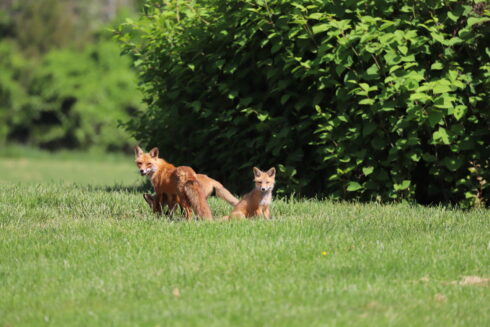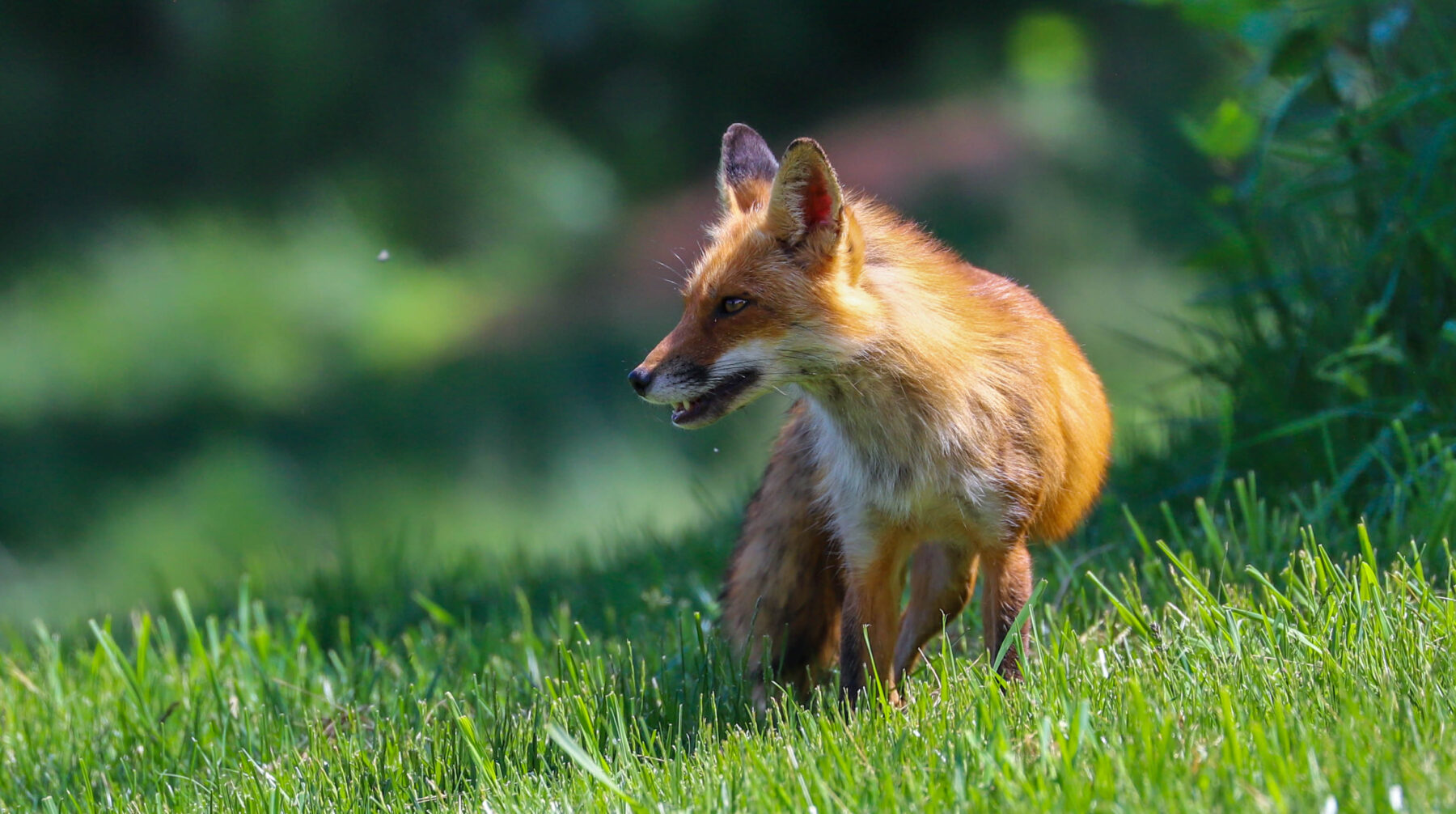Red foxes, Vulpes vulpes, are one of the most common species of wildlife living in Montgomery County. They are highly adaptable and can be found in both suburban and urban environments. Suburban development with nicely landscaped yards and golf courses, abundant open space and parks, and a mix of agriculture is ideal habitat for many wildlife species, especially foxes.
As dog-like predators, their presence may sometimes frighten people. People may also perceive them as sick if they are observed during the day or walking around a neighborhood. However, foxes are much smaller than they may appear, and pose little risk to people. Foxes are diurnal animals, which means, they are active during day and night. So, while they may be most active at night, foxes that are active during the day are not necessarily sick. Red foxes are especially active during the daytime in spring and summer as they are foraging for food to feed their young.
Foxes are beautiful, clever animals. Catching any glimpse of this animal can be exciting to see. However, foxes that
become too comfortable around humans may quickly become a nuisance.
Natural History
Description
The red fox has a slender body with long legs, a narrow muzzle, upright triangular ears and a bushy tail, usually tipped in white. Adults weigh 10-15 pounds with a body length of 20-25 inches. Fur color varies from bright red orange to brown with a white-cream colored underside. They are native to North America and can be found from the Arctic Circle to Central America. Red foxes prefer woodland edges along with open fields, meadows, lawns and wetlands. *
Foxes can be very vocal and make barks, howls, and whines, especially during mating season. The sounds vary from a short, sharp bark, followed by a combination of screeches, yells and long howls, and loud shrieks in the distance. Sometimes their vocalizations are described as sounding like a woman or child screaming. This can be alarming or unsettling for those who hear it, and understandably so!
Diet
Red foxes are omnivores, meaning that they eat both plants and animals. Their diet includes small rodents, rabbits, snakes, insects, small birds, carrion, berries and fruits. Foxes will bury food for later use, especially around the dens site when raising young.
Breeding
Breeding season for red foxes occurs during January through March. After a gestation period of 51 to 53 days, females give birth to a litter averaging 4 or 5 pups (or kits) in the spring, most in April or May. During this period, both the male and female will use a den or an abandoned groundhog burrow to raise and rear young. Foxes may also den in crawl spaces under decks and sheds, which can cause conflicts with humans. It is common to observe them out during the day as they search for food to bring back to the den site to feed their young. Outside of breeding season, foxes are solitary, tend to avoid dens and will sleep in sheltered locations, though they can sometimes be found basking in the sunshine. They rely on their thick fur for warmth during the colder months and are most beautiful during this time of year.

Foxes in the Suburbs
As mentioned above, it is not uncommon to observe foxes during the day. Ensuring that foxes are viewed as good neighbors has as much to do with our actions as it does with theirs. In order to peacefully coexist with foxes, we are the ones that must learn to adapt.
Here are some things to do, and things not to do, to keep foxes wild and minimize conflicts:
- NEVER feed foxes or wildlife (other than birds)
- Don’t leave bowls of pet food or water outside at night
- Keep garbage in sturdy containers with tight fitting lids
- Keep compost in enclosed bins instead of exposed piles
- Keep bird feeders out of reach and don’t let seeds accumulate on the ground
- Keep pets inside at night and watch small dogs while outside, even during daylight hours
- Keep cats indoors
- Protect livestock (chickens, piglets, young lambs, etc.) by securing them in a structure or fenced-in area
- Always walk your dogs on a leash (this is required on parkland and in other locals)
- Close off crawl spaces under porches and sheds where foxes could rest and den
- Don’t tolerate foxes around your yard – chase them off by yelling, throwing sticks, etc.
NOTE: Individuals that are experiencing problems with foxes or other wildlife species are encouraged to call the toll-free Maryland Wildlife Information line at (877) 463-6497.
